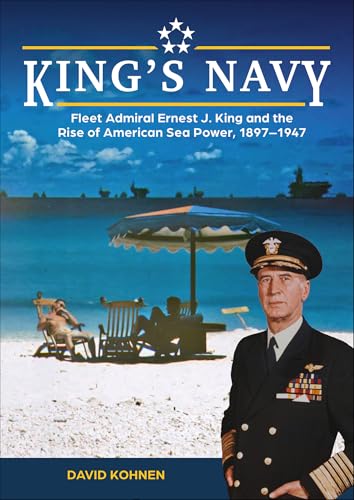
Tarnished Victory: Divided Command In The Pacific And Its Consequences In The Naval Battle For Leyte Gulf
by LCDR James P. Drew
Popularity
3.98 / 5
* A book's popularity is determined by how it compares to all other books on this website.
Where to buy?
Buy from Amazon* If you buy this book through the link above, we may receive a small commission at no extra cost to you.
Tarnished Victory: Divided Command In The Pacific And Its Consequences In The Naval Battle For Leyte Gulf by LCDR James P. Drew
Details
War:
World War II
Perspective:
Commanders
Military Unit:
US Navy
True Story:
Yes
Biography:
No
Region:
Pacific
Page Count:
104
Published Date:
2014
ISBN13:
9781782897187
Description
Main Themes and Topics
Tarnished Victory: Divided Command In The Pacific And Its Consequences In The Naval Battle For Leyte Gulf by LCDR James P. Drew delves into the complexities of military command during one of the most pivotal naval battles of World War II. The primary theme of the book revolves around the fragmented command structure maintained by the Allied Forces throughout the Pacific campaign and how this contributed to both successes and failures during the Battle for Leyte Gulf. Drew examines the decision-making processes of the Joint Chiefs and scrutinizes how their choices impacted operational efficiency, leading to disunity and miscommunication. The book is a deep dive into the strategic and operational consequences of divided command and its direct effects on the battle's outcomes.
Writing Style and Tone
LCDR James P. Drew employs a meticulous and analytical writing style, drawing extensively from military records and firsthand accounts. The tone of the book is scholarly yet accessible, making it suitable for both military historians and general readers interested in World War II history. Drew's narrative is meticulously structured, presenting a balanced exploration of tactical details without overwhelming the reader. His insights are profound, offering a mix of strategic analysis and human elements that bring the chaotic nature of war into sharp focus.
Brief Summary
In Tarnished Victory, LCDR James P. Drew documents the historical context of the Battle for Leyte Gulf, emphasizing its strategic importance in the Pacific Theater of World War II. The book highlights how the divided command structure among the Allied Forces led to a lack of cohesion in operations, ultimately influencing the outcome of the battle. Drew examines key decisions by military leaders and their far-reaching consequences, illustrating how the missed opportunities for unified command contributed to unnecessary casualties and missteps during the conflict. Despite these issues, the overwhelming success achieved by the Allied Forces in this battle marked a turning point, effectively crippling the Japanese Navy's ability to continue its war efforts.
Criticism
While the book is praised for its detailed and insightful analysis, some critics have pointed out that it could have benefited from a more comprehensive exploration of the Japanese perspective. By focusing primarily on the Allied side, the analysis may seem somewhat one-sided. Additionally, though the book is dense with information, the intricate military terminology and detailed descriptions might overwhelm readers less familiar with naval warfare or World War II history.









